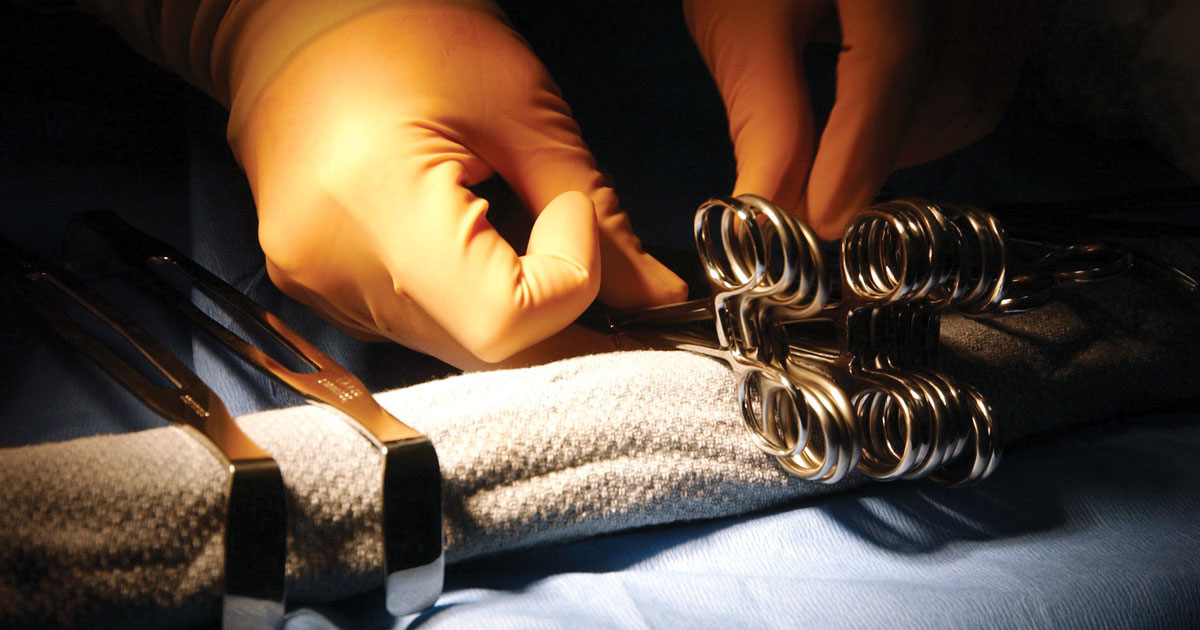A six-inch abdominal incision, hormones for untimely menopause, a four-day hospital stay and an eight-week recovery. With a history of hysterectomies like that, no woman wants to hear she needs one. The hysterectomy of today, however, isn't your mother's hysterectomy of 20 or more years ago.
"The indications really have not changed, but the procedure itself has improved," said Nisha McKenzie, PA-C of Grand Rapids OB/GYN.
As in past decades, women today could need a hysterectomy for any of the following reasons: abnormal uterine bleeding, fibroids, pelvic pain and cancer. In a hysterectomy, the uterus is removed and—in most cases—the fallopian tubes as well, due to an association between the fallopian tubes remaining and the development of ovarian cancer.
Years ago, the ovaries were automatically removed along with the uterus and fallopian tubes, and women would immediately enter menopause. Such is not the case today. Generally, ovaries are left to preserve ovarian function and would only be removed in instances of ovarian cysts or if the patient had a history of breast cancer. By leaving ovaries intact, women no longer enter menopause prematurely as a direct result of the surgery and can avoid prescriptions for hormone replacements, which have been known to increase the risks of breast cancer.
Hysterectomies of the past were always abdominal hysterectomies, where the surgeon would remove the uterus through a large incision in the lower abdomen. In addition to a hospital stay, the surgery also required six to eight weeks of recovery. As technology advanced and instruments and surgical devices improved, alternative procedures became available. "These procedures changed women's lives as far as hysterectomies go," said Dr. Steven Lown, Senior Partner of Michigan Obstetrics & Gynecology.
Today, minimally invasive outpatient surgeries are standard procedure. McKenzie cites that over half of hysterectomy procedures are minimally invasive, and Lown states that only rare cases, such as those where the uterus is too big to remove through smaller incisions, require large abdominal incisions.
A laparoscopic hysterectomy is one such minimally invasive procedure: The surgeon makes a small incision in the belly button and inserts a small scope through which he or she can watch the procedure as it appears on a monitor. Three or four additional small incisions are made to insert specialized instruments used for the removal process.
The da Vinci robotic hysterectomy follows a similar process. Instead of performing the surgery by hand with tools, however, the surgeon sits at a console and performs the surgery through a da Vinci robot. The robot, said Lown, "can move as your wrist does, but it's the size of a pencil."
Both laparoscopic and da Vinci robotic surgeries are outpatient surgeries where women could go home within three or four hours after the surgery is completed. And instead of the six-week recovery period required from abdominal hysterectomies, women are back to routine activities in less than a week.
"The more we can limit the number of incisions, the size of incisions, the less pain women will have," said Lown.
Written by Cassie Westrate, staff writer for West Michigan Woman.




